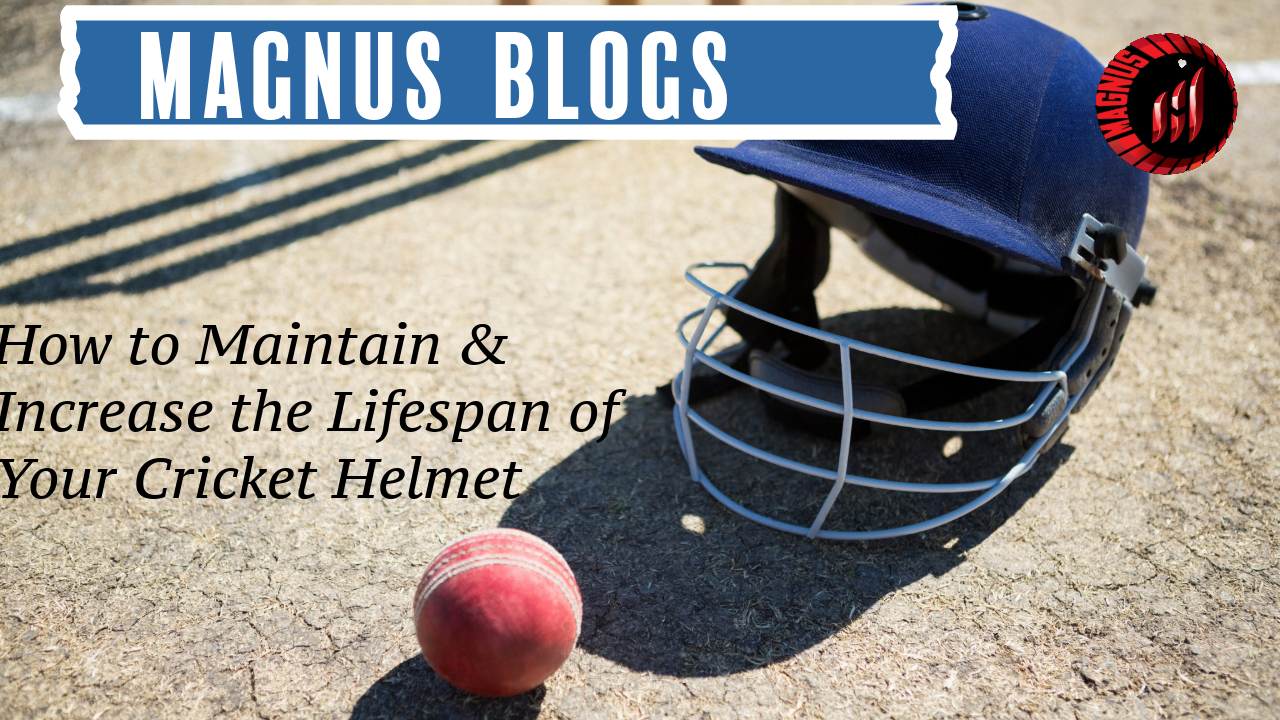A cricket helmet is one of the most important pieces of protective gear for any cricketer. It shields you from fast bowlers, bouncers, and unexpected deflections, reducing the risk of serious head injuries. However, like any piece of equipment, a helmet requires proper care to ensure it remains effective and lasts longer.
In this guide, we will explore essential maintenance tips to keep your cricket helmet in top condition, extend its lifespan, and ensure maximum safety on the field.
1. Why Helmet Maintenance is Important
A well-maintained helmet:
- Ensures maximum protection against impact
- Enhances comfort while playing
- Prevents wear and tear from sweat, dirt, and moisture
- Saves money by increasing its durability
Neglecting maintenance can lead to:
- Weakened structure, making it less effective
- Uncomfortable fit due to worn-out padding
- Rusting or loosening of the grille and screws
- Foul odors from sweat and bacteria buildup
2. How to Clean Your Cricket Helmet Properly
Keeping your helmet clean is the first step to maintaining its quality. Follow these steps to clean different parts of your helmet.
a) Outer Shell Cleaning
- Use a soft, damp cloth to wipe off dirt and sweat stains.
- For tough stains, mix mild soap with water and gently scrub with a sponge.
- Avoid using harsh chemicals or abrasive cleaners that can damage the shell.
b) Inner Padding and Sweatband
- The padding inside the helmet absorbs sweat, leading to bacteria buildup.
- Remove detachable padding (if possible) and wash it with mild soap and lukewarm water.
- For non-removable padding, use a soft cloth with mild detergent to clean it.
- Allow it to air dry completely before use.
c) Grille Maintenance
- The grille (face guard) protects your face from impact but can rust over time.
- Use a dry cloth to wipe it after every use.
- If the grille gets wet, dry it immediately to prevent rusting.
- Apply a light coating of anti-rust spray if needed.
d) Strap and Buckle Care
- Straps and buckles secure the helmet on your head but can wear out over time.
- Clean straps with a damp cloth and mild soap.
- Inspect buckles for any cracks or breakage and replace if needed.
3. Proper Storage Tips for a Longer Lifespan
How you store your cricket helmet significantly affects its durability. Follow these storage tips to prevent damage.
- Keep it in a cool, dry place. Avoid direct sunlight and excessive heat, as this can weaken the helmet shell and padding.
- Use a helmet bag to protect it from dust, moisture, and accidental impacts.
- Avoid stacking heavy items on it, as placing heavy objects on the helmet can cause deformation, reducing its effectiveness.
- Keep it away from chemicals and water to prevent mold, rust, or odor buildup.
4. Inspecting Your Helmet for Damage
Regular inspections ensure your helmet is in good condition and offers maximum protection.
What to Check?
- Outer Shell: Look for cracks, dents, or deep scratches. If the shell is compromised, replace the helmet immediately.
- Grille and Screws: Ensure the grille is securely attached, with no loose or rusted screws.
- Padding and Foam: Check for worn-out padding that may affect comfort and protection. Replace if necessary.
- Chin Strap and Buckle: If the strap is fraying or the buckle is broken, replace them to ensure a secure fit.
When to Replace Your Helmet?
- If the shell is cracked or heavily scratched, as this weakens protection.
- If the grille is bent or rusted, affecting its ability to withstand impact.
- If the padding has worn out, reducing comfort and fit.
- If the helmet has taken a major impact, it may no longer be safe, even if it looks fine.
5. Dos and Don’ts of Helmet Care
Do:
- Clean the helmet regularly.
- Store it in a dry place.
- Check for damage before every match.
- Use a proper helmet bag for storage.
- Replace worn-out padding and straps.
Don’t:
- Expose the helmet to extreme heat, such as leaving it in a car under the sun.
- Use harsh chemicals or bleach to clean the helmet.
- Keep the helmet in damp or humid places.
- Continue using a damaged helmet – safety comes first.
6. Choosing a High-Quality, Long-Lasting Helmet
If you want a helmet that lasts longer, invest in a high-quality one. Look for:
- Strong outer shell made of high-impact polycarbonate or fiberglass
- Adjustable grille for a snug fit and proper visibility
- Comfortable, replaceable padding for easy maintenance
- Secure chin strap and buckle to ensure the helmet stays in place
- Lightweight design to reduce strain on the neck during long innings
Top brands like Shrey, Masuri, Gray-Nicolls, and SG manufacture durable helmets used by professional cricketers worldwide.
7. Final Thoughts: Make Your Helmet Last Longer
Your cricket helmet is an essential investment in your safety. By following these maintenance tips, you can extend its lifespan, maintain its effectiveness, and ensure maximum protection every time you step onto the field.
A well-maintained helmet not only lasts longer but also gives you confidence while facing fast bowlers.
Looking for a High-Quality Cricket Helmet?
Check out Magnus Cricket’s latest collection of durable and comfortable helmets designed for all levels of cricketers. Stay safe and play smart.
Cricket bat types, Cricket equipment in usa, Cricket equipment store, Cricket gloves, Cricket helmet, Cricket kit bags, Cricket retailers, Durable cricket gloves, English willow bats, Icc approved helmets., Kashmir willow cricket bat, Latest kashmir willow bats,
